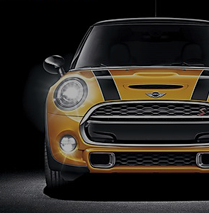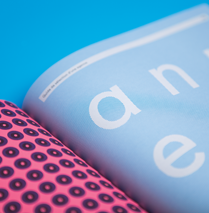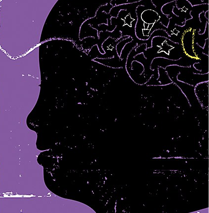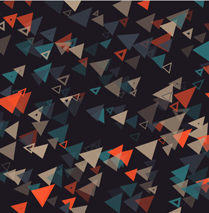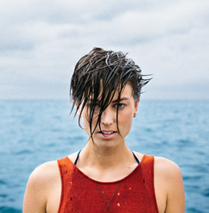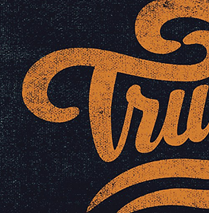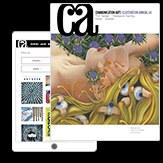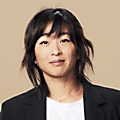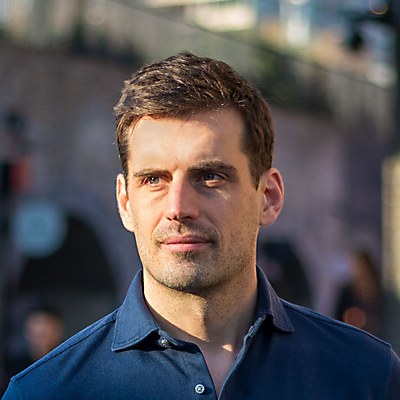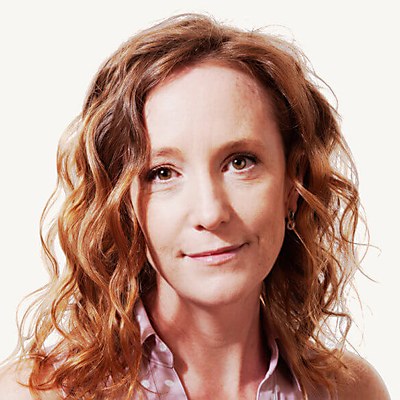How did you get started in photography? Unlike many photographers, I didn’t pick up a camera as a kid; I was more interested in drawing, painting and writing poems. After high school, I attended the University of British Columbia, where I majored in art history and minored in studio arts. I was still mostly interested in drawing and painting but decided to take a photography class to get extra credits. I instantly loved it, enjoying the mix of the technical and craft, and I loved escaping from the world in the darkroom.
One of my early photography instructors was artist Jeff Wall. I was inspired by his cinematographic style and large-scale work. Because I was also studying art history at the time, I nerded out to his references and responses to other artists, the conceptual nature of his work and social commentary. I was also obsessed with pop culture, devouring fashion magazines and being drawn to the photography in the ads. After graduation, I took a night school photography program to get more hands-on experience with studio and strobe lighting. Soon after, I started working as a photo assistant and digital tech.
From there, I traveled between Vancouver and Los Angeles, working as a digital tech and photo assistant on high-profile advertising and entertainment shoots.
What’s your current equipment setup, and what do you like about it? My projects range from editorial to motion campaigns to multi-set entertainment shoots, so for me, it’s always about what gear best suits each project.
As for cameras, I think it’s important to keep up with what is new in order to meet clients’ needs. When I started shooting, we were still shooting film, so I have a medium format Contax 645—which I thought was going to be my setup forever. It saw me through film as well as early digital when combined with the Phase One back. But gone are the days of photographers having only one camera system for their entire career. As DSLR technology keeps getting better and faster, I take the Contax out less and rely on my Canon R5 more often.
You have a strong sense of visual storytelling that works well with advertising. How did you develop this? What intrigued you about working as an advertising photographer? As much as I am drawn to the visual, I love good stories. And sad songs. And clever jokes. I’m really inspired by people and learning about their experiences in the world. Advertising photography helped give me a voice. The goal in advertising and conceptual work is to express an idea, story or emotion clearly and quickly, and as the photographer or director, it’s my job to bring it to life. I love creative problem solving and collaborating with the agency, clients and talent to make it all come together.
What I also appreciate is the people and the advertising community. When I was an assistant on set, I was drawn to the energy of the creatives. I appreciated how diverse, thoughtful, collaborative and funny these people were. If you’re going to spend long days working on set, it’s great to do it surrounded by people who make you think and laugh.
You’ve worked for many clients in the field of entertainment, including ABC, Disney, Netflix and Warner Bros. What would you say are some of the challenges and opportunities specific to creating photographic promos for movies and TV shows? Every entertainment job comes with its own unique set of challenges. Logistically, you’re working around the (very tight) schedule of the talent and the production, often on their working stage, dealing with schedules, space, sound and even power. Creatively, there are all the various aesthetics aspects to manage. And of course, when it comes to photographing celebrities, you need the confidence and people skills to work with big—and occasionally intimidating—personalities.
To me, it’s about directing and being a leader: reading the room, inspiring and managing my crew, having open and fluid dialogue with my clients, ensuring that my subjects feel comfortable, and getting the very best I can out of everyone in a limited period of time. None of this is achieved alone. These shoots require tremendous effort from a lot of people: costume and wardrobe stylists, hair and makeup, props and set decorators, producers, and my tech and assistants. The payoff is succeeding as a team and getting to work with and create with so many different people.
What have been some of your favorite campaigns to work on, and what did you learn from them? I recently worked on a powerful PSA about domestic violence for the YWCA with ad agency Rethink. I loved the script and its message the first time I read it, and I knew it was a project I wanted to work on. I had to direct a well-known ex-NHL player through very personal and intimate dialogue; working with him for a cause that I believe in was very fulfilling.
Another favorite was with branding agency Here Be Monsters on a small-budget awareness campaign for used motor oil recycling, believe it or not. Completely different than the YWCA, this one was a humorous, character-driven concept. The agency gave me a lot of creative freedom to choose the talent, locations, wardrobe and color palettes, which let me bring my personality to some quirky characters. I appreciated their trust and collaboration. It’s always rewarding when everyone really pours their hearts into a project.
I definitely tailor my process and approach to each job I work on. Listening and understanding the brief and doing my homework lets me look at the project from my gaze and hear it in my own voice, ensuring that the overall style can still be true to my vision.
I particularly love your series Self Portraits 2022 in which you explore the valuation of art through 60 self-portraits. What inspired you to create this body of work? I spent my formative years living in Saskatchewan in a relatively small town. As a first-generation Chinese Canadian, I was an obvious minority. Though I couldn’t articulate it at the time, I felt a constant yearning to see someone who looked like me or had similar life experiences in mainstream culture. My feeling of otherness made me interested in other people’s stories but also gave me a desire to share my stories and my gaze.
In late 2021, I helped my family clear out my grandparents’ old home, as it had been sold and was about to be torn down. They moved into this home in the 1970s and practically raised almost all my cousins and I there at some point in our lives. Despite the fact that both my grandparents had passed many years before, virtually everything had remained in place since I was a child. It was like a generational family time capsule.
I found some more clothing to add to my growing wardrobe of vintage hand-me-downs from my mother, grandmother and aunts. Some garments came directly from when they all lived in Hong Kong, while others are pieces that came from their new life and identity here in North America. All the women in my family loved fashion, and amazingly, we all shared similar sizes!
I loved thinking about how these dresses were specifically chosen and meticulously tailored by the women in my family, how some of them traveled across oceans, found new homes and informed our shared histories and culture. I knew I had to create a personal project that explored these themes and shared these stories.
How do you balance personal work with assignments and commissions? Not always very well. For me, it really becomes a matter of finding enough time in my days. I keep a notebook and a note in my phone so I can constantly jot down ideas, no matter where I am. Being self-employed, we sometimes have slow periods, and personal work keeps me busy during those lulls. Having the backlog of prompts is really helpful so I’m not starting from scratch each time.
I get a lot of inspiration from my commissioned work as well. When I’m briefed by an agency, I learn about different brands, industries and consumers, a.k.a. people. It’s a great way to learn about the world around us and an interesting glimpse behind the curtains into popular culture.
Given that you’ve commented on NFTs and mass-produced art, how do you feel about the recent development of AI-generated art and photography? This is a tricky one, and I’m sure that my answer will already be dated by the time anyone reads this! There has already been some really beautiful AI work created but, to me, a lot feels derivative. It lacks emotion, a story, that spark and soul that we as photographers work so hard to capture in our subjects. I think the beauty of art is in its storytelling and the connection between real people. For now, I’ll say that I think AI is a tool like Photoshop—another tool we were once afraid of but now use comfortably.
But speaking as a human and a mother, I’m not sure that it’s good for our society to surround itself with depictions of the world and with people that are completely unreal. There is so much beauty in reality and truth. Personally, I’ll take that over fantasy any day.
What is the weirdest thing that happened on a shoot, and how did you handle it? Having spent long days in strange locations (haunted mansions, mental institutions and questionable back alleys at night) with a diverse cross section of people (celebrities to normal folks from all walks of life)—and especially during a global pandemic—I’ve had a lot of strange things happen on set, but I have yet to create a top five list for this! No matter how bizarre things get on a shoot, the reality is that no one who views the final images will ever know what you went through to get that shot. Keeping calm, measured and in control of your set is critical. At the end of the day, my job is to get a great image—with no excuses!
Do you have any advice for photographers just starting out in the field? I don’t love giving specific advice to a general audience because everybody is so different. But one piece I would share to anyone is be present. Be present in searching for things that inspire you. Shoot some things just for yourself without thinking about what you’re going to do with it. Don’t worry if you will post it on social media or whether people will like it: just do it for you.
Also, don’t shoot everything. Don’t always go out with a camera. Be present in a beautiful moment and just really, really feel it. Soak it in. The things you do, feel and experience when you are not thinking about work can inspire and inform your work as well. ca


